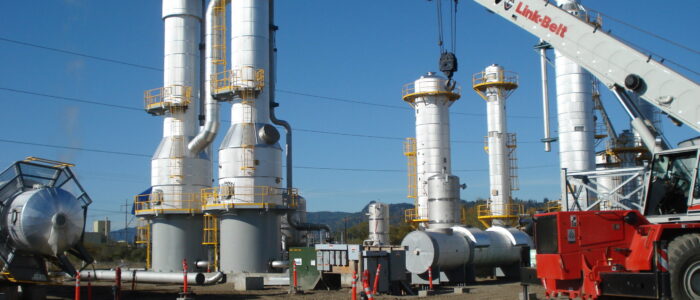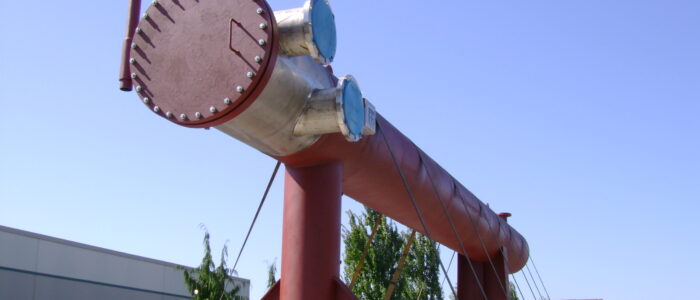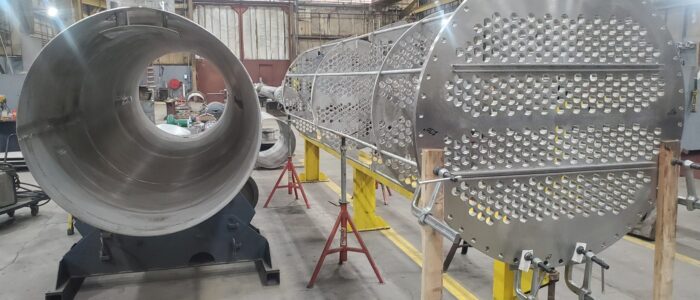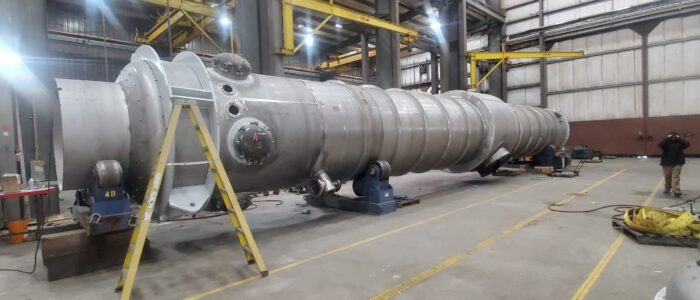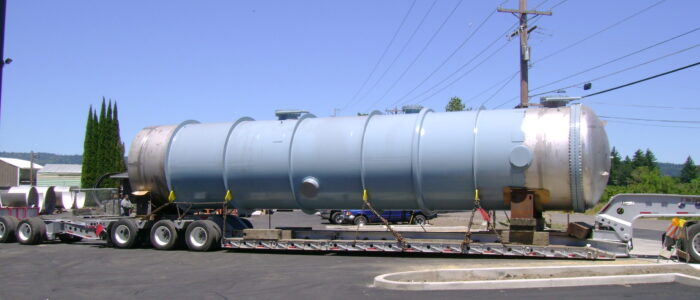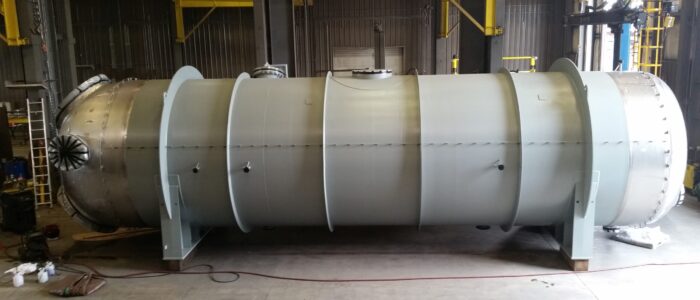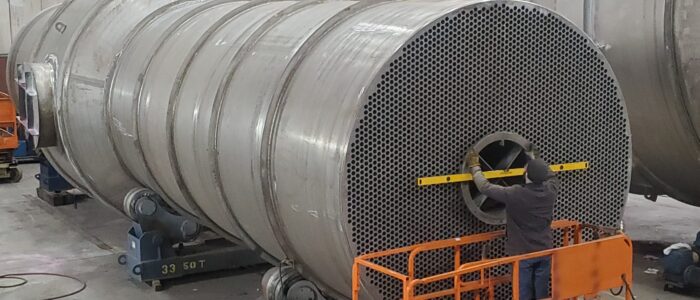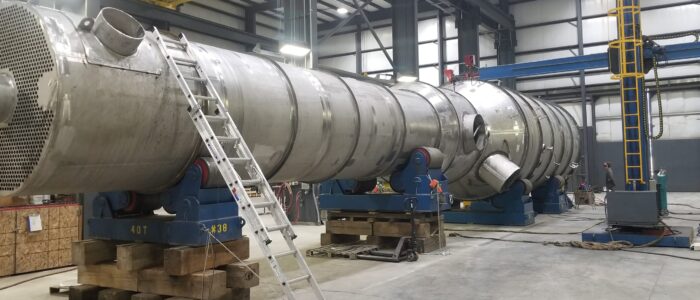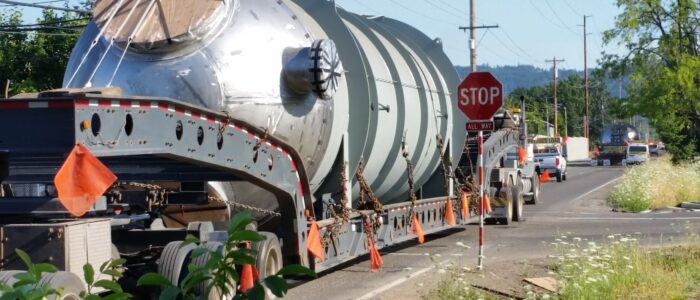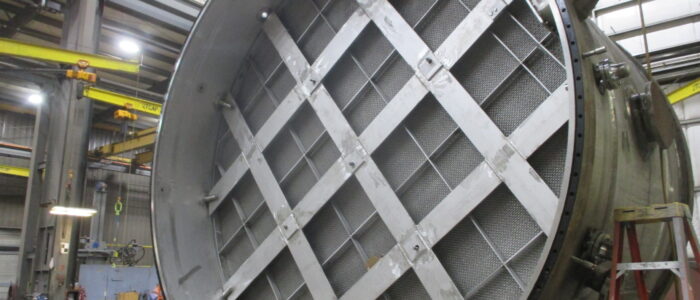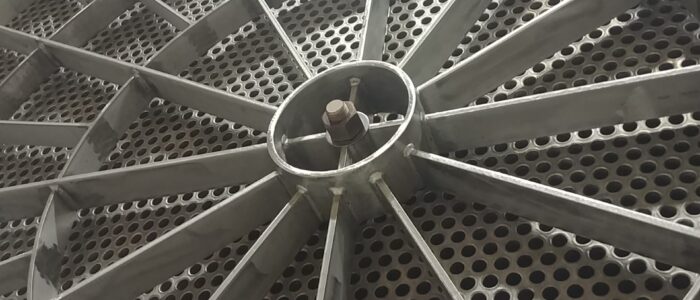Shell and tube exchangers come in many variations to meet process requirements in almost every industry or application. They deliver reliable heat transfer performance by utilizing a high turbulence and counter flow, making one or more passes. Harris Thermal also can provide turbulators to enhance heat transfer efficiency.
Shell and Tube heat exchangers are most used in heating or cooling process fluids and gases. They are commonly used in applications where a need to heat or cool large volumes exists. At Harris Thermal Transfer Products, we specialize in shell and tube heat exchangers for many different industries and applications. With over 135 years of experience, and the fact that we produce all parts necessary for heat exchanger fabrication in house, we can meet the most challenging design and quality criteria. Our experienced in-house engineering team will work with you to design and optimize your heat exchanger that will be proudly built in the United States.
Harris Thermal specializes in heat exchangers in all different configurations and sizes. Our experience, quality and capabilities set us apart from our competitors. We are experienced in the design and fabrication of heat exchangers and partner with our customers to fabricate custom equipment that is designed to meet the exacting requirements of whatever process our clients require. We manufacture our heat exchangers to meet the exacting standards of ASME and TEMA as required by our customer’s needs, using industry best practices in both design and fabrication to produce the highest quality equipment.
FAlling Film
The most widely used evaporator in the process industry. Vertical shell-and-tube heat exchanger with a wrap-around or laterally arranged centrifugal separator. Falling film evaporators, sometimes called brine concentrators, are an excellent technology for efficient heat transfer, producing high-purity distillate, and achieving water recovery greater than 90%. Recovered water in a brine concentrator is suitable as a cooling tower or scrubber makeup, and can be recycled to other plant processes, including demineralizer feedwater. These wastewater evaporators can be driven by mechanical vapor recompression (MVR) or with live steam depending on the relative costs of electric power and steam
Formaldehyde Converters
Formaldehyde is a main raw material for manufacturing value-added chemicals such as melamine, urea-formaldehyde and phenolic resins. The most common product is in a 37% aqueous solution, but concentration can be as high as 57%. Today, there are two main routes to produce formaldehyde in an industrial scale: oxidation-dehydrogenation using a silver catalyst, involving either the complete or incomplete conversion of methanol; and the direct oxidation of methanol to formaldehyde using metal oxide catalysts (Formox process)
Due to its low cost and high purity, formaldehyde has become one of the most important industrial and research chemicals in the world. Our long-standing reputation for excellent service and superior products has made us the leader in this field.
Kettle Reboiler
Kettle reboilers are very simple and reliable. They may require pumping of the column bottoms liquid into the kettle, or there may be sufficient liquid head to deliver the liquid into the reboiler. In this reboiler type, steam flows through the tube bundle and exits as condensate. The liquid from the bottom of the tower, commonly called the bottoms, flows through the shell side. There is a retaining wall or overflow weir separating the tube bundle from the reboiler section where the residual re-boiled liquid (called the bottoms product) is withdrawn, so that the tube bundle is kept covered with liquid. Kettle reboilers are reliable in that they can handle high vaporization of up to 80 percent and are easy to maintain due to the removable tube bundle. The liquid from the bottom of the tower flows through the tube bundle and exits as condensate. A restraining device (baffle) controls the liquid level over the bundle

